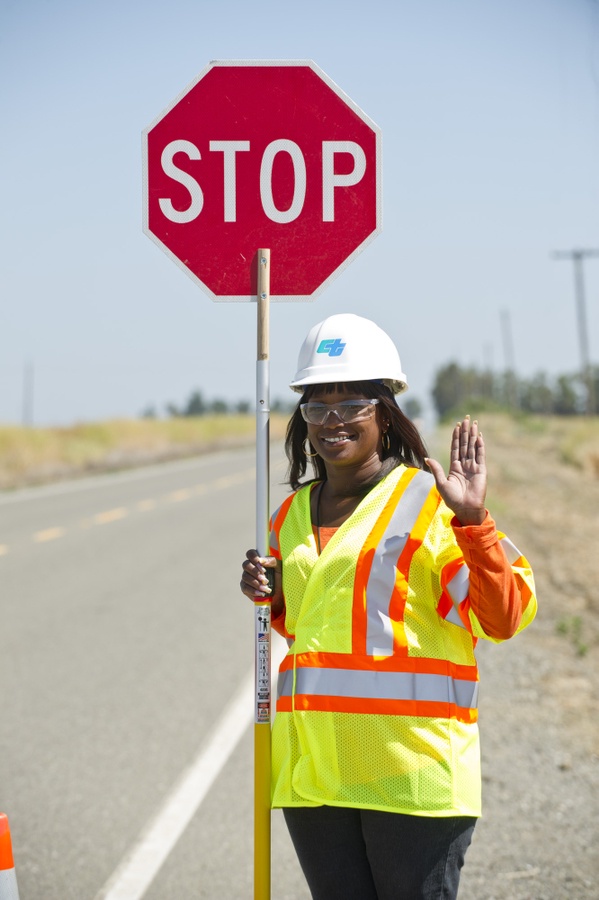In the realm of road construction and maintenance, traffic flagging stands as a critical safety measure, guiding both motorists and construction workers safely around hazards. However, when the sun sets, these professionals face a unique set of challenges unknown to their daytime counterparts. Night shift traffic flagging is a different ball game, demanding heightened alertness, exceptional visibility measures, and advanced communication skills to manage the risks associated with low-light conditions.
The Inherent Risks of Nighttime Traffic Flagging
The first step in understanding the complexity of night shift traffic flagging is recognizing the intrinsic risks attached. Reduced visibility makes it harder for motorists to see flaggers and vice versa. Drivers are more likely to be fatigued or impaired at night, potentially leading to slow reaction times or reckless driving. Additionally, the glare from vehicle headlights or insufficient lighting can further compromise a flagger's visibility, making the job all the more hazardous.
Enhanced Visibility: A Non-Negotiable Need
Given these challenges, ensuring that traffic flaggers are clearly visible to motorists is paramount. Flaggers should wear high-visibility clothing, specifically Class 3 apparel, which includes reflective vests, trousers, and jackets that illuminate in vehicle headlights. Moreover, illuminated stop/slow paddles, batons, or wands enhance visibility, helping to communicate clear signals to approaching drivers.
But it's not just the flaggers themselves that need to be visible. Proper lighting around the work zone is crucial. Portable light towers should illuminate areas without causing glare that can impair vision for drivers or workers. Balancing brightness and coverage is key to maintaining a safe environment for everyone on the road.
Communication is Key
Communication between flaggers, workers, and site supervisors becomes even more critical during night shifts. Advanced two-way radios or other communication devices are necessary to relay information about oncoming traffic, potential hazards, or emergency situations promptly. These tools should have clear signals and be easy to use, ensuring swift reaction times and coordination among team members.
Workers should establish clear hand signals as well, as backup forms of communication. In the cacophony of a job site, amidst the hum of machinery and passing traffic, verbal communication can be unfeasible. Well-understood hand signals can convey messages quickly and clearly without the need for shouting or repeated instructions.
Mental Alertness and Physical Well-being
The human aspect of night shift work can't be overstated. Biological clocks dictate a natural decrease in alertness during nighttime hours, which can be particularly perilous for traffic flaggers who need to maintain high levels of concentration. Regular breaks, proper nutrition, and strategic caffeine use can help flaggers stay alert. Additionally, rotating shifts among the crew can prevent excessive fatigue and ensure that everyone stays sharp on the job.
It's also essential for traffic flaggers to recognize the signs of fatigue in motorists. Erratic driving, inconsistent speeds, or failure to obey signals can all be indications of a tired driver. Flaggers must be prepared to react quickly to protect themselves and the work zone in these instances.
Training and Preparation: The Backbone of Safety
For all these strategies to be effective, comprehensive training is crucial. Night shift traffic flagging requires knowledge and preparation beyond standard daytime protocols. Simulation-based training can be particularly effective, allowing flaggers to experience and respond to potential nighttime scenarios in a controlled environment. These programs should emphasize the importance of visibility, communication, vigilance, and quick decision-making in low-light conditions.
In conclusion, traffic flagging during nighttime is an essential yet challenging aspect of road maintenance and construction work. It requires a combination of high-visibility attire, advanced communication systems, exceptional situational awareness, and comprehensive training protocols to ensure the safety of both the flaggers and the public. By acknowledging and preparing for these challenges, traffic flaggers contribute significantly to minimizing accidents and maintaining smooth traffic flow, regardless of how dark the environment might be. Their role, often underappreciated, is pivotal in preventing chaos on the roads and ensuring that construction projects can proceed safely and efficiently, around the clock.


No comments yet